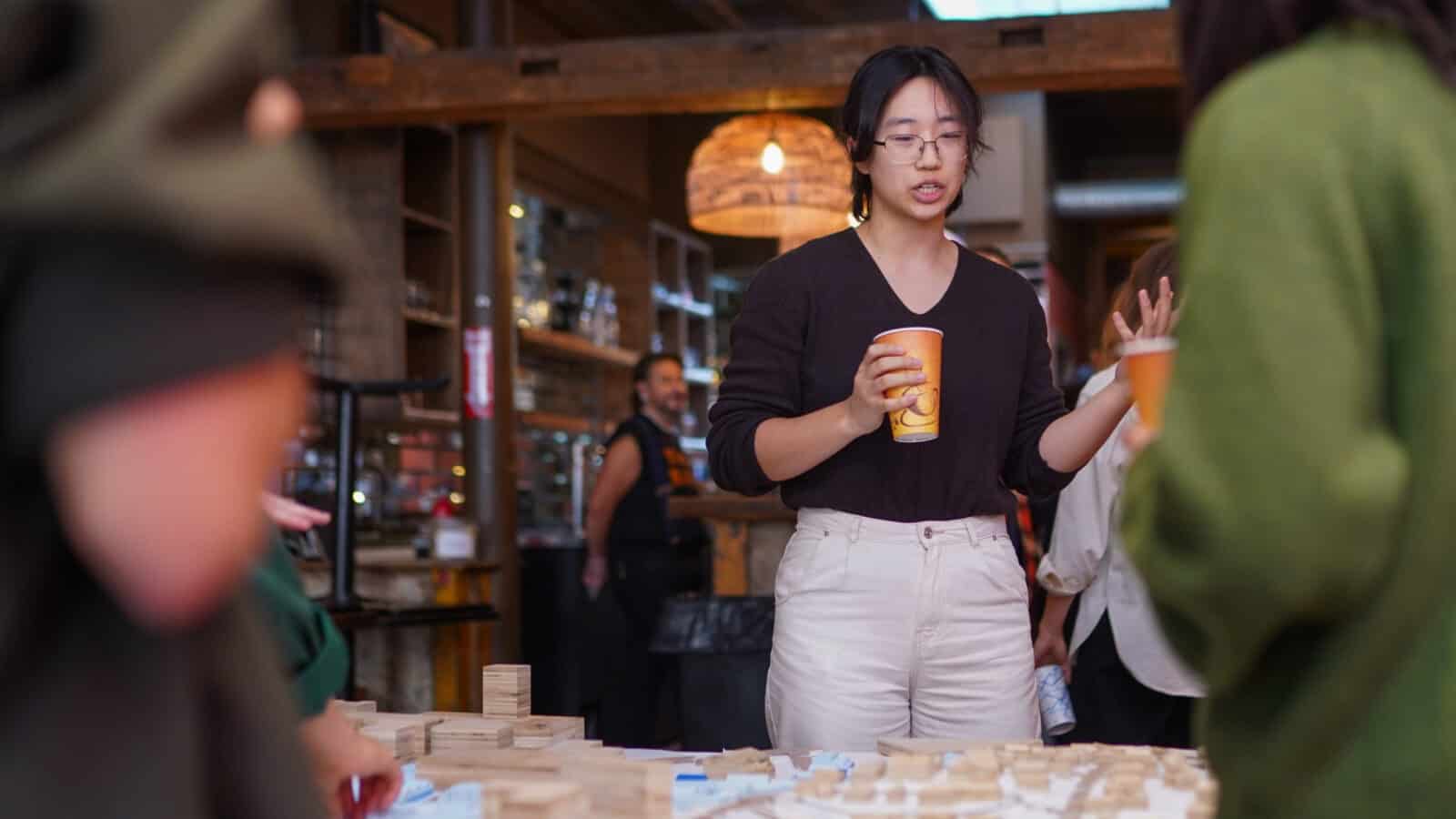Fifty years ago, the West Side of Pittsfield was a neighborhood of people sitting on their porches, says architect and Pittsfield native Tessa Kelly. You could have walked through streets of family houses, stone buildings and elm trees, restaurants and small shops with apartments above.
You could have met a friend at a Polish market or at the Hotel Pickwick, stopped in at a barber or rummaged for auto parts and caught a train to New York from the Union Station made of Berkshire marble.
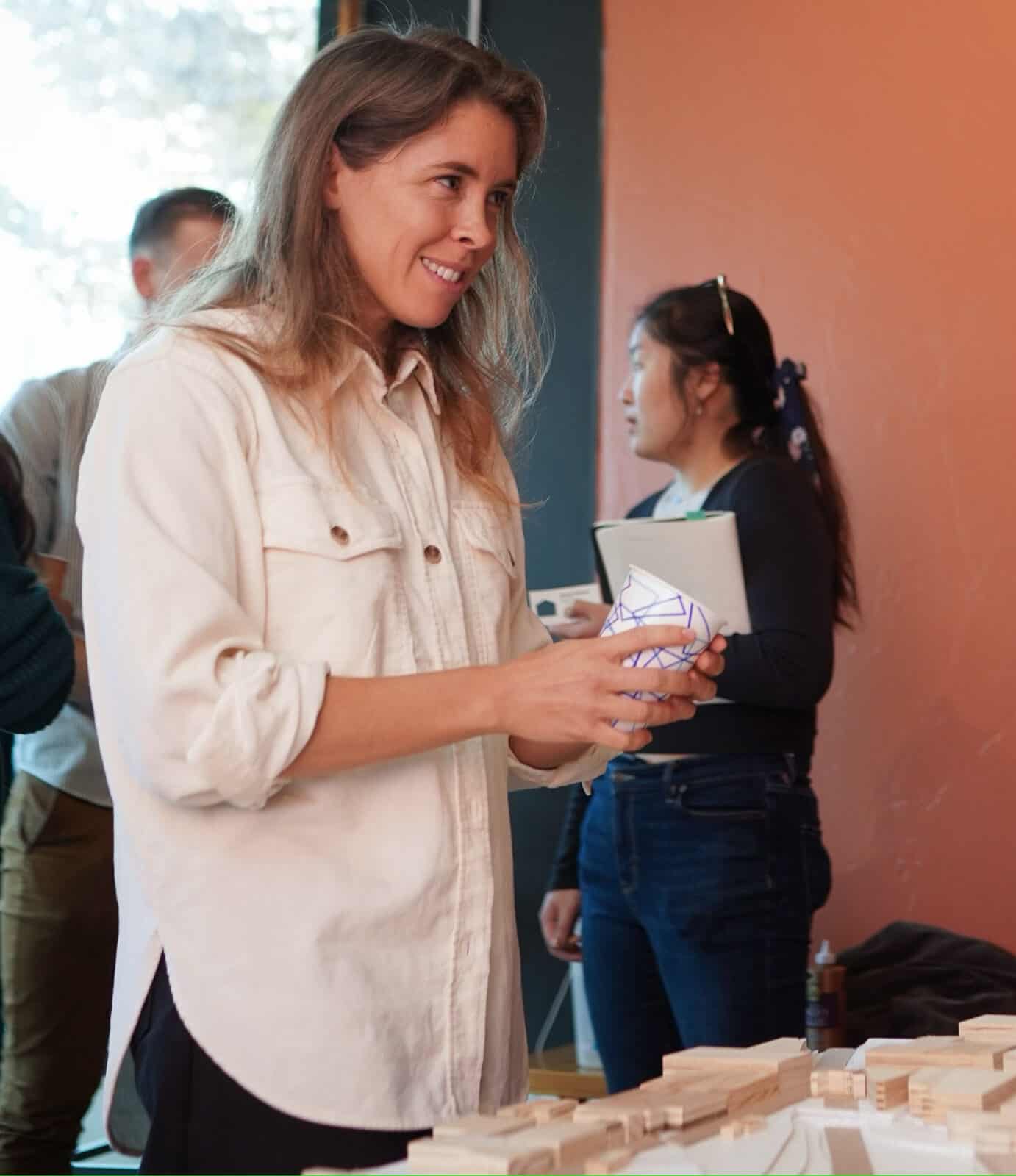
Pittsfield architect and professor Tessa Kelly speaks at a presentation on the past and future of the West Side of Pittsfield. Press photo courtesy of Tessa Kelly
Or more accurately — exactly 50 years ago, you would have seen the space where they had been. Fifty years ago this fall, Kelly says, in 1973, “Urban Renewal” demolitions leveled more than 86 acres of land and 200 structures in and around downtown.
Kelly wants to lift this part of town again — she wants to invite everyone in the community to imagine what can grow here in the West Side in the future.
‘How can we use the land in the West Side for a purpose again?’ — Tessa Kelly
On Saturday, January 27, from 6 to 9 p.m., she is opening a community conversation at the Lichtenstein Center for the Arts, with architecture students from Princeton University and middle and high school students in the Eagle Academy.
This evening grows out of many ongoing conversations, she said, with the West Side Legends, and Kamaar Taliaferro, branch officer with the Berkshire NAACP — a community leader specializing in housing — and Pittsfield Mayor Pete Marchetti among them.
Kelly grew up here in the city, and she holds community and connection at the center of her work. As co-founder of Group Architecture and Urbanism (Group AU) and the Mastheads, a public design non-profit, she has created a local writing residency and writing programs with Pittsfield elementary schools and neighborhoods.
And so she has reached out to leaders in the city who know the West Side and Morningside from their own lived experiences and hold their own visions for bringing real, sustainable new life and energy to their communities.
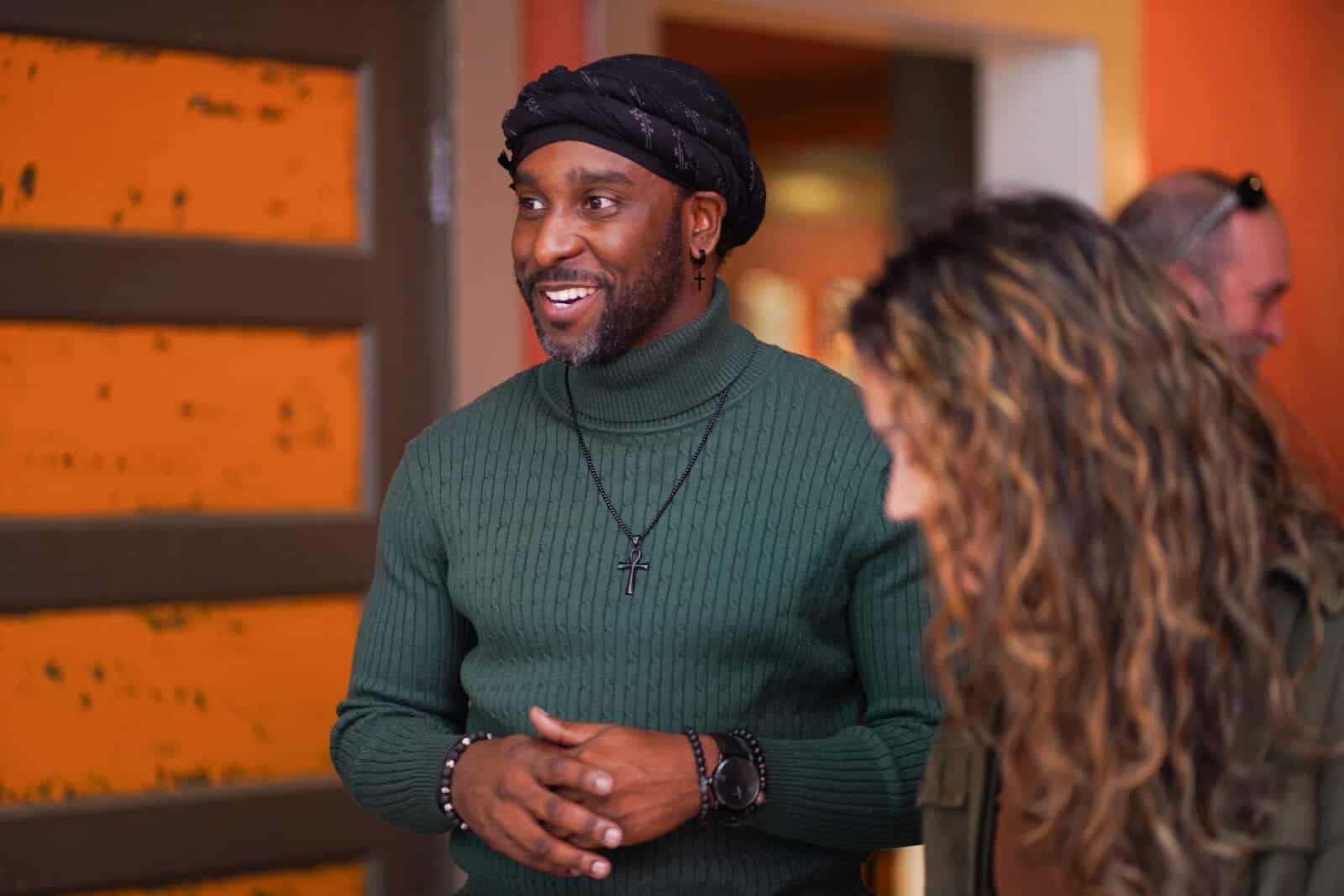
Students and community gather at a presentation on the past and future of the West Side of Pittsfield. Press photo courtesy of Tessa Kelly
“How can we use the land in the West Side for a purpose again?” she asks on a winter morning at the Lichtenstein— “how can we create an energy, strengthen our downtown — create a downtown that connects?
This year is a good time to raise these questions, she says. The City of Pittsfield is looking at zoning, including the West Side, and the Biden administration has set aside Federal funds to help urban areas that have suffered damage from Urban Renewal. And that damage here is extensive.
In a 2019 conversation with the Eagle, Denis Powell remembers his own childhood streets — Silvio and Enrico Gamberoni’s Busy Bee Restaurant, Polish markets and an Italian bakery where his family would get hot rolls to eat with butter. The west side in the 1940s and 1950s was a community of immigrants, he said.
He remembers neighborhoods of single-family homes, local shops and restaurants and apartments — in today’s terms, Kelly said, the kinds of mixed-use and affordable housing that the city is actively looking for.
In the 1970s, Kelly’s father remembers as a boy standing in a half-demolished hotel — the windows were all blown out, and he was looking through the broken glass at a soapbox derby on the street below.
“Urban Renewal” completely ripped out 25 acres in the Columbus neighborhood, Kelly said, and 61 acres in the ‘Jubilee project’ — the city tore down buildings on West Street: the restaurant district, lumber yards and machine shops near the railroad tracks, and more than half of the houses on Francis Crescent.
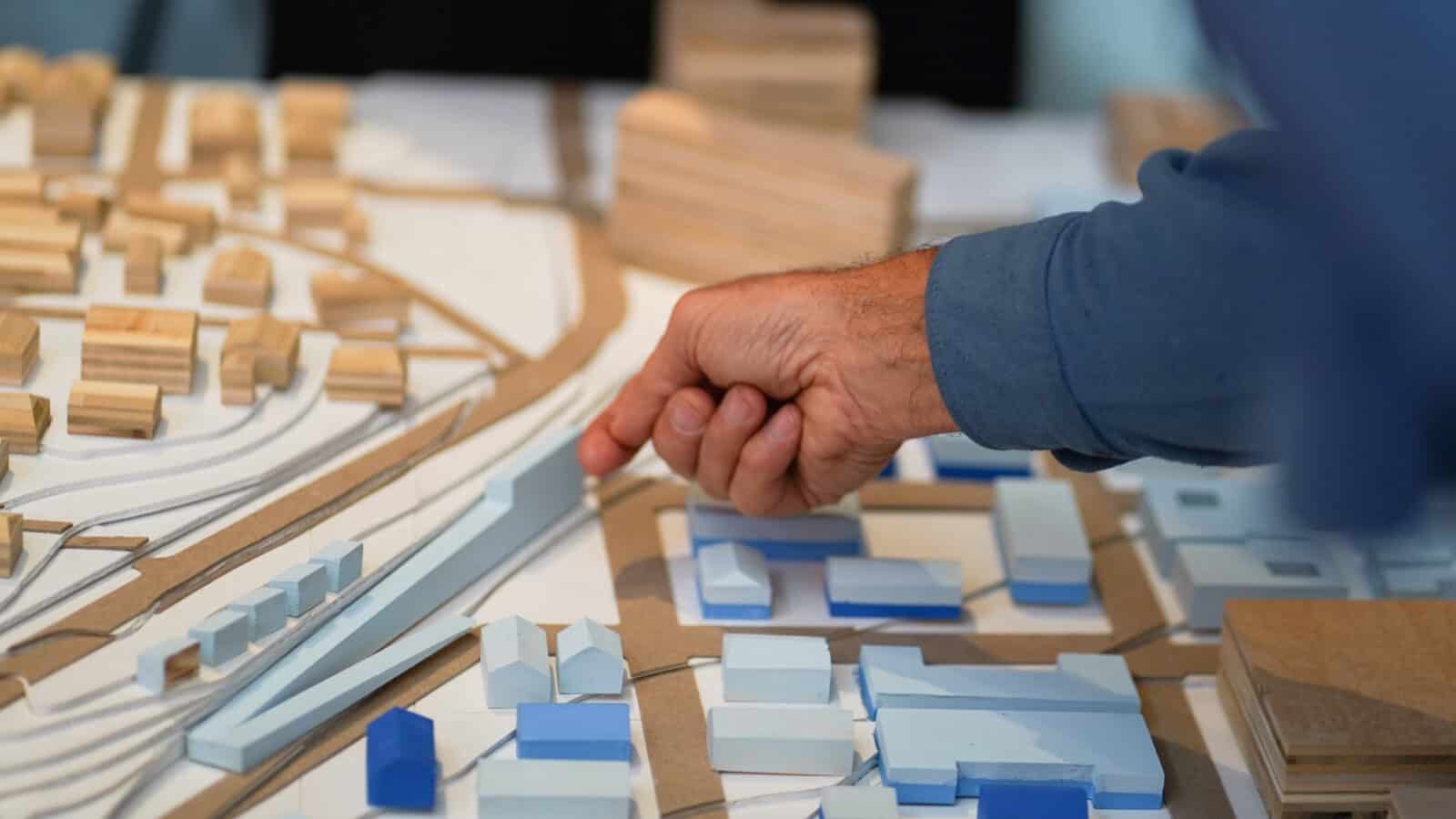
Tesa Kelly and her architecture students offer models of the West Side, past, present and possible future. Press photo courtesy of Tessa Kelly
The city demolished streets of buildings made of marble, brick and masonry.
“The cost of building with these materials today is not even in the realm of possible,” Kelly said. “Two hundred buildings were leveled, and the materials were brought to the dump — and without even a plan for what would would come next.”
“My grandmother was a Polish woman in Pittsfield, and she never stopped talking about the buildings that were lost and how beautiful they were.”
And the programs had a disproportionate effect on BIPOC and immigrant communities, she said. The city razed Black neighborhoods — many of the Black families in the city then lived on and around Deering, Mill and Satinet Streets.
‘My grandmother was a Polish woman in Pittsfield, and she never stopped talking about the buildings that were lost and how beautiful they were.’
Some homes and apartments were replaced with apartment blocks, she said, as happened in cities across the country, and the effects on communities were often devastating. It is challenging to connect when people are living in a tower.
“When each family has a porch,” she said, “and elders can sit and see who’s passing by and talk wtih their neighbors, people have different relationships, and communities can keep intact and safe and whole. It’s different when people are stacked six floors up. They have no where to meet — the community becomes a wasteland.”
Pittsfield was one of the last total-clearance projects the federal government financed, she said. By 1974 the entire national project was cancelled, because it had proved a conclusive failure, destroying communities and downtown centers. But here the damage had already been done.
“It’s truly horrific,” she said. “ … But It’s important not to get lost in despair.”

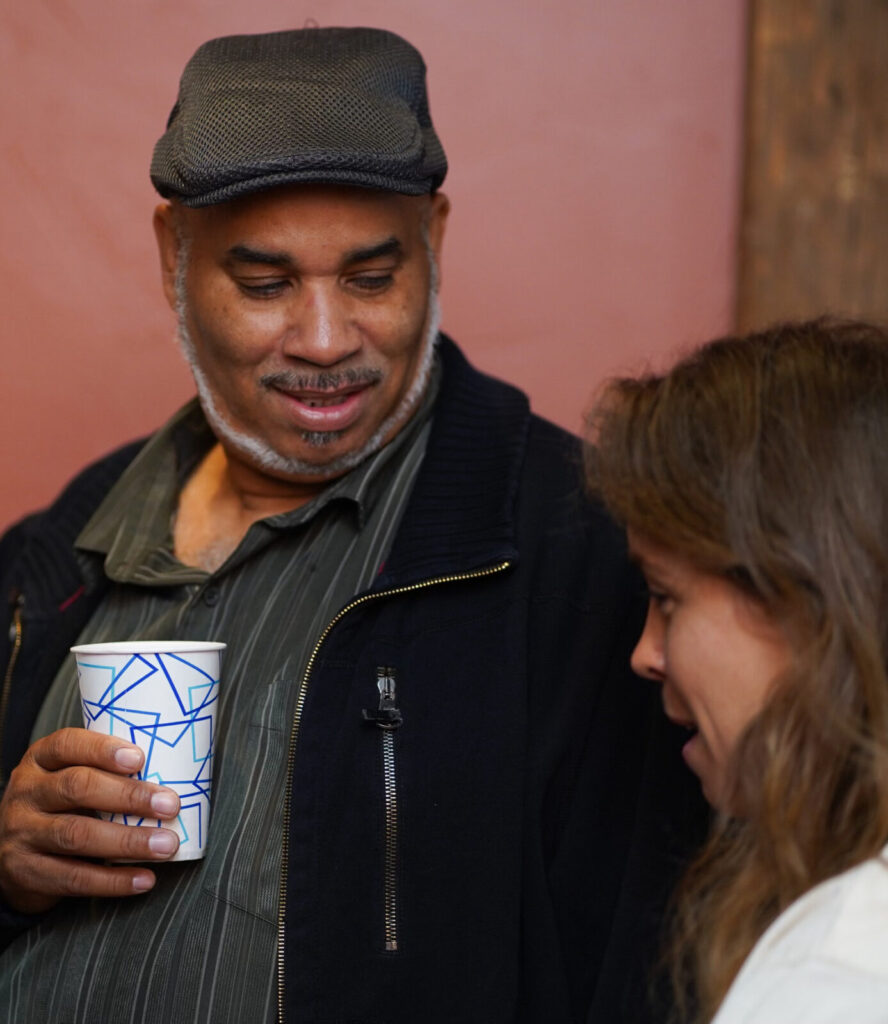
She offers the city a catalyst instead — an invitation to imagine what could grow here today.
“… Now we have North Street and an impassible barrier,” she said. “It’s hard for West side and Morningside residents to come downtown. How do we reconnect the energy of residential neighborhoods?”
This fall she has brought these questions to her students — as a visiting professor of architecture at Princeton University, she has taught undergraduate architecture majors
a course with a focus on local communities.
In the fall, she said, her architecture students have looked closely into the city’s past and present, in conversation with the West Side Legends and Smart Growth America (a national nonprofit that encourages reinvesting in downtowns and main streets.)
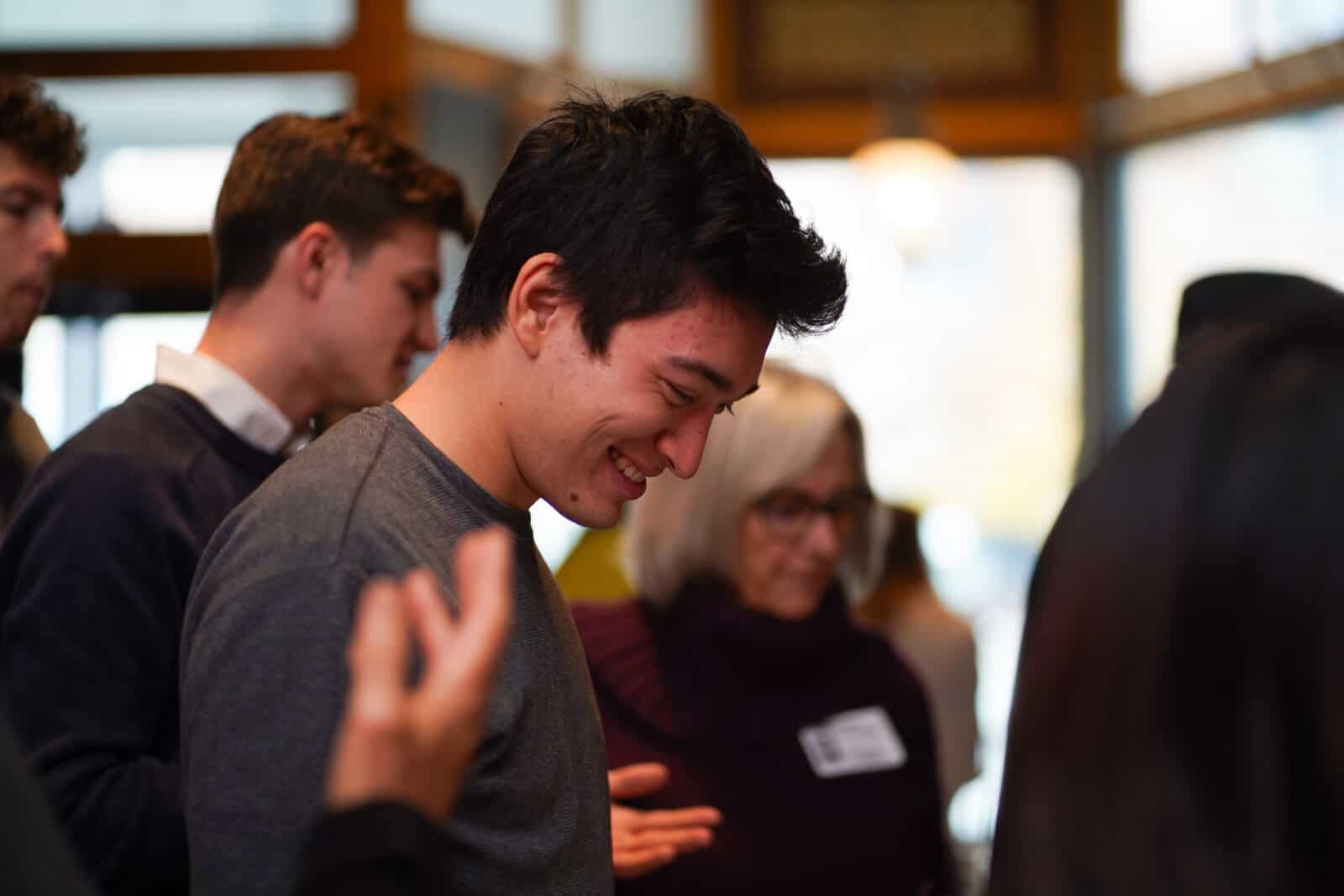
Students and community gather at a presentation on the past and future of the West Side of Pittsfield. Press photo courtesy of Tessa Kelly
“It’s a transformational vision,” she said “… We need to look at the areas already within our downtowns.”
She calls for an intricate play between what already exists and what can change. This kind of thinking may be more challenging for a developer than bulldozing three acres of fields, she said, but — along with protecting open space — it has many greater rewards, over a much longer time, for many more people who live here.
Some of the challenges they face are ongoing, she said. Where Pops Peterson’s mural ‘Walk With Her’ now imbues Ruby Bridges with a shimmering rainbow of color, a slope of houses has become a concrete retaining wall. Roads and bypasses are many lanes wide, impassible to foot traffic, between a few large buildings and wide stretches of parking.
A change in city zoning decades ago also forbids small businesses in many residential areas, Kelly said — sapping the economy in neighborhoods where people once lived above their own shops.
‘It’s a transformational vision. … We need to look at the areas already within our downtowns.’
Her third model offers a new and different vision. Each of her students has imagined a new building, she said, where people can live, work, play and gather.
This winter she is working with middle and high school students at Eagle Academy, the only Pittsfield school in this area disrupted by Urban Renewal, and they too are are dreaming up and designing new spaces. They and their families will meet with Kelly and her students before the community conversation on January 27.
Her college students have imagined spaces for woodwork and carpentry, metalwork and machine shops, where people can learn and show their work, blending the rich cultural legacy in the Berkshires with the legacy of mechanical innovation and people working with their hands.
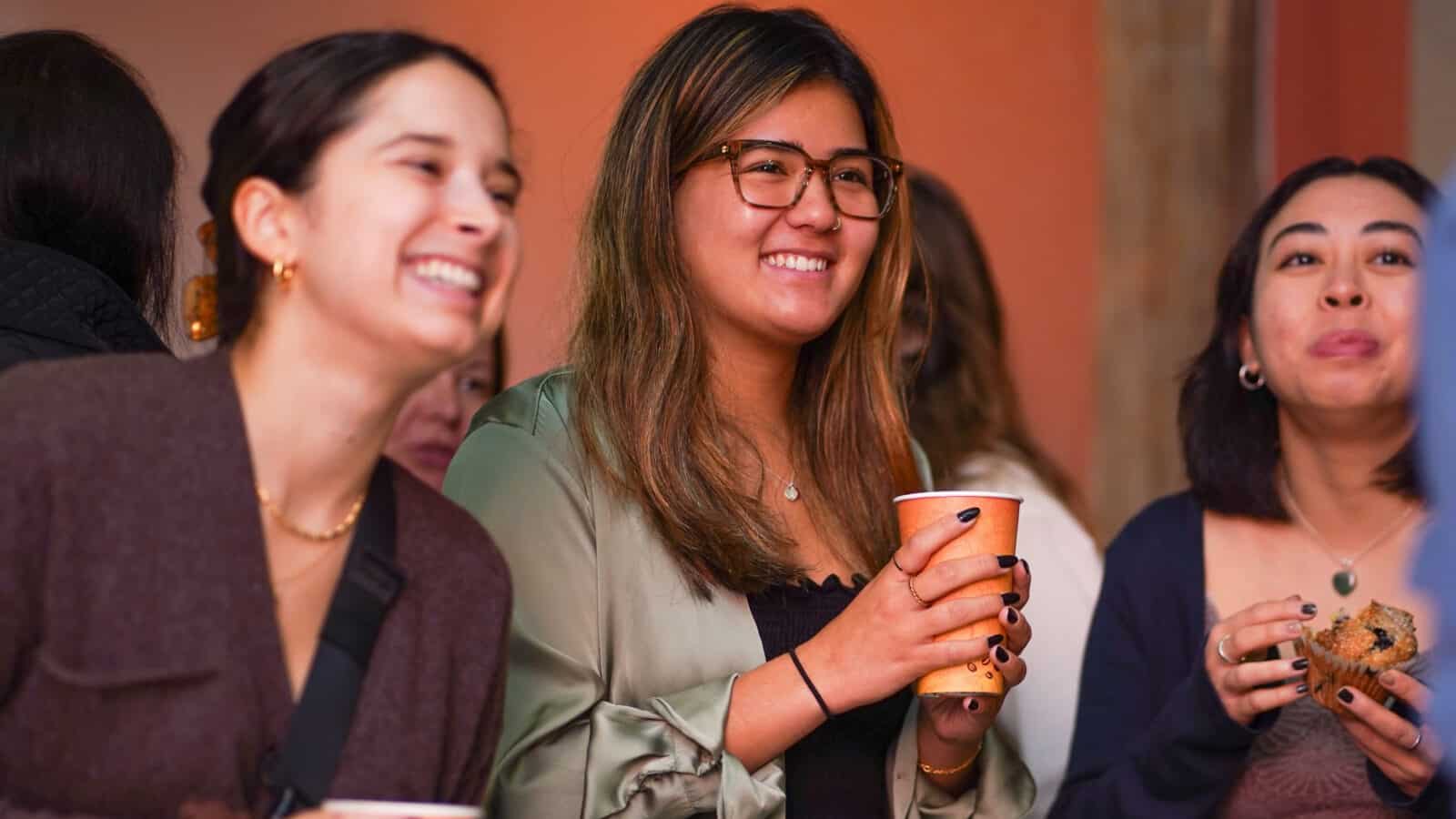
Students and community gather at a presentation on the past and future of the West Side of Pittsfield. Press photo courtesy of Tessa Kelly
One student considers a center for the culinary arts school at Berkshire Community College, where student chefs can offer tastings and workshops. In the 1970s, Kelly said, BCC moved from downtown to the far end of West Street, miles out of town, taking all the energy of a community of students and teachers away from the center. What can happen if the city can bring them back downtown?
Kelly and her students want to recognize the needs of local businesses, nonprofits, schools and creative places, she said. They want to include technology and entrepreneurship in the conversation, and public transportation, and tap into local creative places nearby — an office space for VidMob, summer housing for actors with Barrington Stage and Berkshire Theatre Group.
‘Gathering places are hard to find in the Berkshires, and even minor encounters in public places can support our well-being. … This whole system can be interdependent.’
Above all, they envision spaces where people can come together. Even from streets nearby, Kelly said, walking downtown or to the local Big Y is hard and dangerous, across multi-lane roads and the railroad track.
She suggests a grocery store, on Columbus Ave., close enough for people to walk to — a local market, a BCC student cafe, a place where people can gather over coffee.
She holds the vision of a neighborhood where people can live and walk and work, talk with their neighbors and feel the life around them at any time of day or night.
“Gathering places are hard to find in the Berkshires,” she said, “and even minor encounters in public places can support our well-being. … This whole system can be interdependent.”
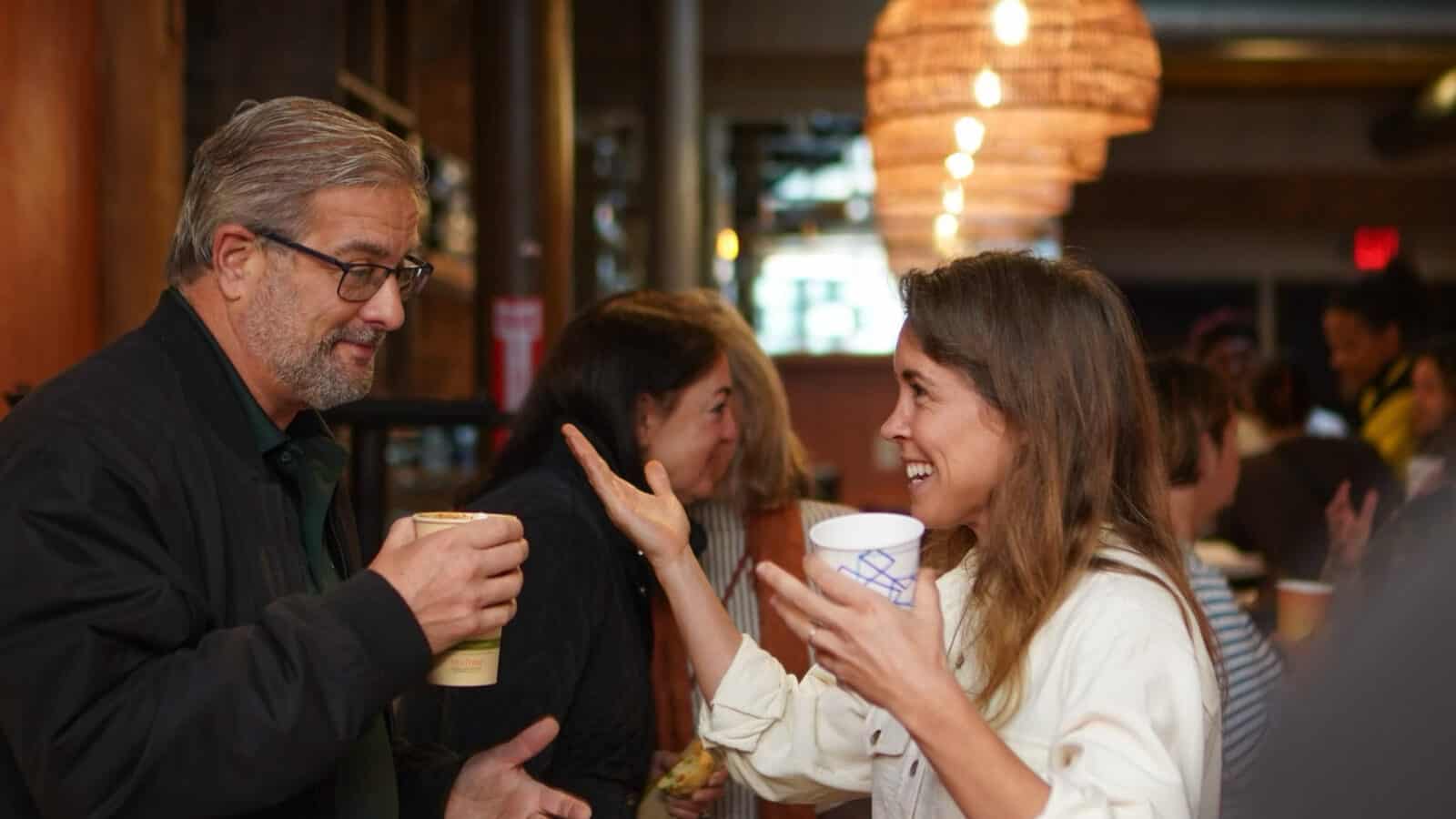
Pittsfield architect and professor Tessa Kelly talks with Pittsfield Mayor Pete Marchetti at a presentation on the past and future of the West Side of Pittsfield. Press photo courtesy of Tessa Kelly

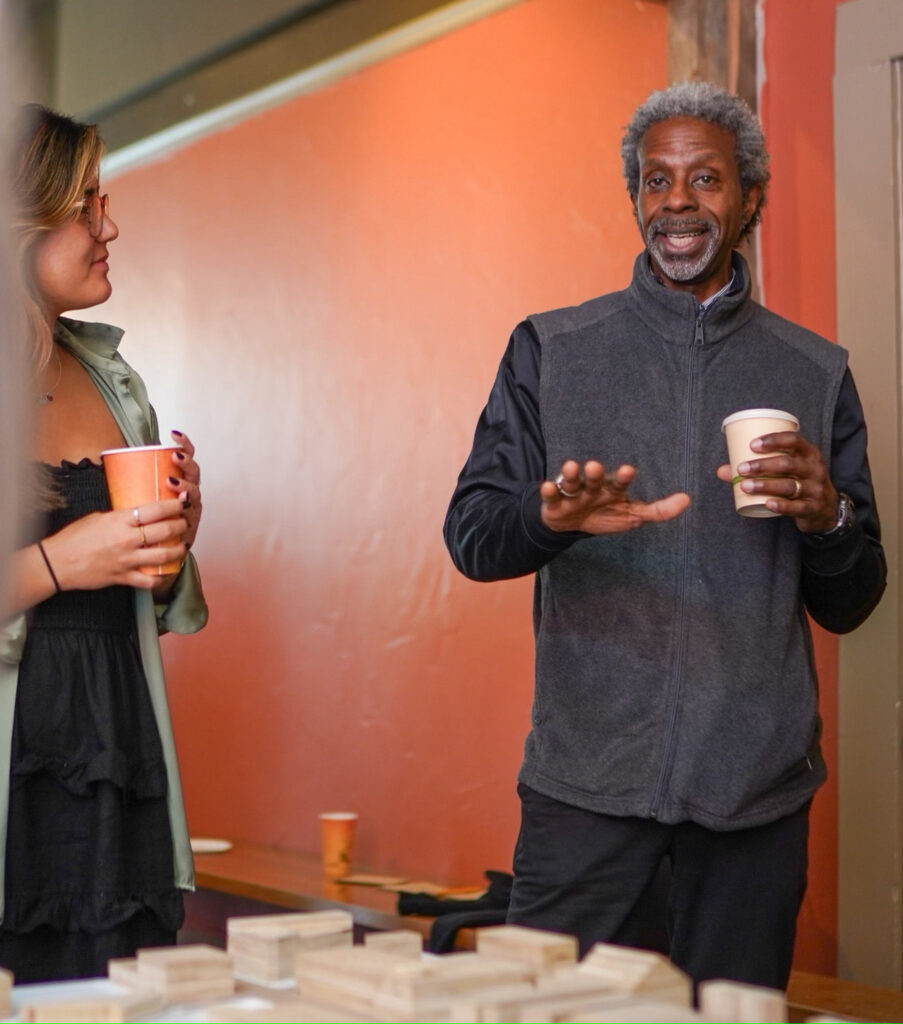
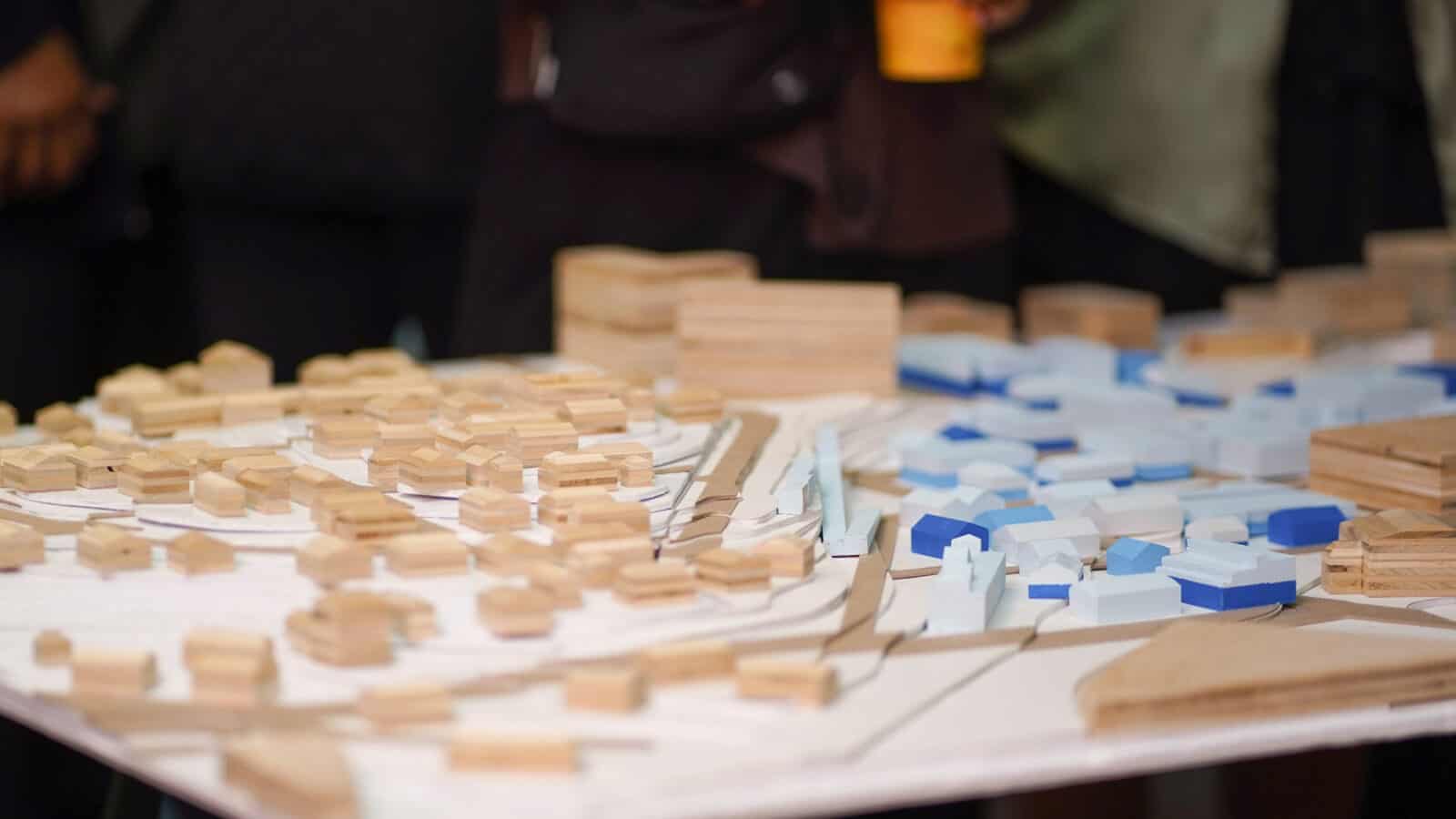
Tesa Kelly and her architecture students offer models of the West Side, past, present and possible future. Press photo courtesy of Tessa Kelly
This story first ran in the Berkshire Eagle — my thanks to features editor Jennifer Huberdeau and managing editor Lindsey Hollenbaugh.

